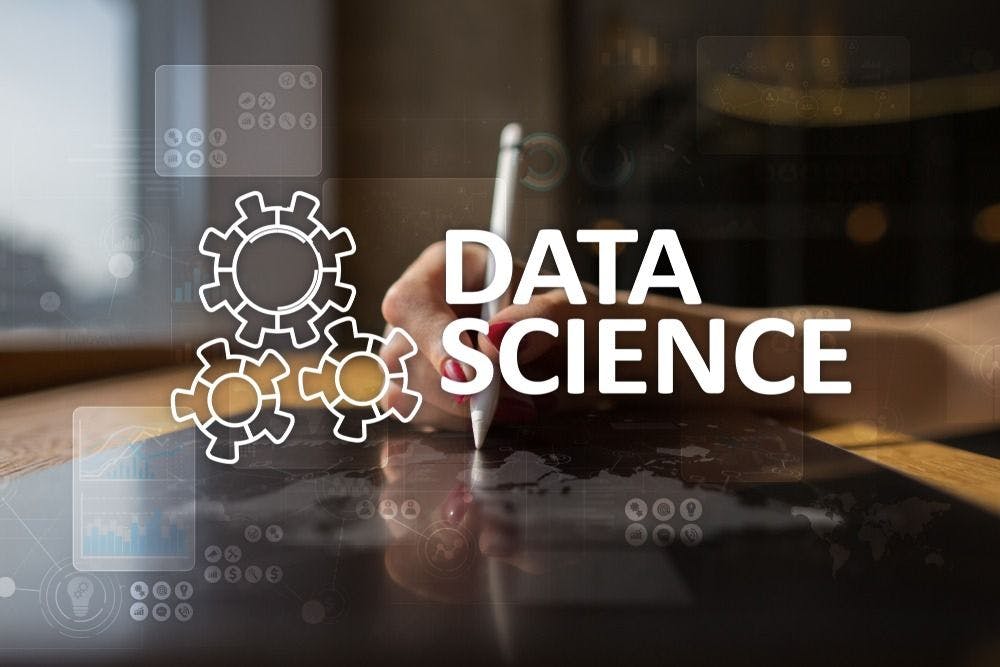Leverage Turing Intelligence capabilities to integrate AI into your operations, enhance automation, and optimize cloud migration for scalable impact.
Advance foundation model research and improve LLM reasoning, coding, and multimodal capabilities with Turing AGI Advancement.
Access a global network of elite AI professionals through Turing Jobs—vetted experts ready to accelerate your AI initiatives.
FOR DEVELOPERS
How to Learn the Basics of Statistics for Data Science

Statistics is an essential component of data science. Whether you are working with big data or small data, understanding it is key to drawing insights and making informed decisions. In this article, we will explore the basics of statistics for data science, the main branches, and how you can get started learning the essentials.
Table of Contents
Statistics: A fundamental pillar of data science
The purpose of statistics is to help you make sense of data and draw meaningful conclusions from it. In data science, statistics plays a crucial role in understanding patterns and trends in data, making predictions, and testing hypotheses.
Roadmap to learning statistics for data science
This guideline provides a clear and structured path for learning statistics and applying it to data science.

1. Start with descriptive statistics: Begin by learning the basics of descriptive statistics, including measures like mean, median, mode, and standard deviation, as well as plots like histograms, bar charts, and scatter plots. This will provide a foundation for understanding more advanced topics.
2. Learn probability: Probability is a vital component of statistics and knowing it will help you understand more complex concepts. Master the essentials of probability distributions, including normal, binomial, and Poisson distributions.
3. Study inferential statistics: Once you’ve learnt descriptive statistics and probability, move on to inferential statistics. Start with hypothesis testing, including t-tests and ANOVA, and then progress to regression analysis, including simple linear regression and multiple regression.
4. Learn advanced topics: Next, explore advanced topics in statistics, including machine learning, Bayesian statistics, and time series analysis.
5. Practice with real data: To gain a deeper understanding of statistics, it’s important to practice with real data. You can find publicly available datasets online.
6. Stay up-to-date: Statistics is a rapidly evolving field and it’s important to stay abreast of the latest techniques and developments. You can do this by attending conferences, reading academic journals, and participating in online forums.
Prerequisites
You should have a good understanding of mathematics, especially probability. You should also know set theory, algebra, and calculus. We’ll be covering probability and set theory in the following sections.
There are two main branches of statistics: descriptive statistics and inferential statistics. Descriptive statistics is concerned with summarizing and describing data, while inferential statistics is concerned with making predictions and drawing conclusions from data. In data science, both branches are important.
Probability

Probability provides the framework for making predictions and understanding the uncertainty associated with those predictions. Here are some important probability concepts related to data science:
1. Random variable: A random variable is one that can take on different values randomly. In data science, it is used to model the uncertain outcomes of events. The two types of random variables are discrete and continuous.
2. Probability distribution: Probability distribution is a function that describes the probabilities of all possible outcomes of a random variable. There are different types of probability distributions, including normal, Poisson, and Bernoulli distributions.
3. Bayes' theorem: Bayes' theorem is a fundamental concept in probability theory that describes how to update our beliefs about a hypothesis in light of new evidence. In data science, it is used to update beliefs about model parameters, to make predictions based on new data, and to understand the uncertainty associated with those predictions.
4. Conditional probability: Conditional probability is the probability of an event given that another event has occurred. In the context of data science, it is used to model the relationships between variables, to make predictions based on new data, and to understand the uncertainty associated with those predictions.
5. Maximum likelihood estimation (MLE): MLE is used to estimate the parameters of statistical models like regression models, classification models, and other statistical models.
6. Hypothesis testing: Hypothesis testing is a statistical method for testing claims about a population parameter based on sample data. It is used to test claims about model parameters, compare models, and validate predictions.
These are just a few of the important probability concepts related to data science. The best way to gain a better understanding of them is to study them in-depth and practice applying them to real-world data.
Set theory

Set theory is a branch of mathematical logic that provides a foundation for many concepts in mathematics, computer science, and data science. Here are a few important ones:
1. Set: A set is a collection of objects called elements which are considered as a single entity. It can be finite or infinite and can contain elements of any type, including numbers, strings, and other sets.
2. Set operations: Set operations like union, intersection, and complement are used to combine or manipulate sets. They are used to manipulate data, such as to combine or exclude observations based on certain criteria.
3. Venn diagrams: Venn diagrams are graphical representations of sets and their relationships. They are used to visually represent data relationships and help to identify patterns or trends.
4. Cartesian product: The Cartesian product of two sets is the set of all ordered pairs (a, b) where a is an element of one set and b is an element of the other set. In data science, the Cartesian product is used to create new datasets by combining data from multiple sources.
5. Power set: The power set of a set is the set of all subsets of that set, including the empty set and the set itself. It’s used to generate all possible combinations of data and is used in combinatorial optimization problems.
6. Partitions: A partition of a set is a division of the set into disjoint subsets that collectively make up the set. It’s used to divide data into subsets for further analysis, such as to create stratified samples for hypothesis testing.
Mastering these concepts of set theory can help you manipulate and analyze data effectively and gain insights into the relationships between variables.
Basic statistics concepts
Descriptive statistics
Descriptive statistics is an important aspect of data science because it provides a method for summarizing and characterizing large and complex datasets. It plays a key role in the following ways:
1. Data exploration: Descriptive statistics provides a quick and simple way to explore and summarize large datasets. For example, measures such as mean, median, and mode provide summary statistics that can be used to describe the central tendency of a dataset. Additionally, plots like histograms, box plots, and scatter plots give a visual representation of the data that can be used to identify patterns and relationships in the data.
2. Data cleaning: Descriptive statistics can also be used to identify outliers, missing values, and other data issues that need to be addressed before further analysis can be performed. By using measures like minimum, maximum, and quartiles, data scientists can quickly identify data points that are outside the normal range and take appropriate action.
3. Data presentation: Descriptive statistics is a powerful tool for presenting data in a clear and concise manner. By summarizing data with measures like mean and standard deviation, data scientists can communicate complex data in a way that is easily understood by others. Plots like histograms, bar charts, and line charts can also be used to visually represent data in a way that is engaging and easy to understand.
4. Data analysis: Descriptive statistics provides a foundation for more advanced data analysis methods. For example, correlation and covariance can be used to identify relationships between variables. Meanwhile, hypothesis testing can be used to make inferences about populations based on sample data.
Inferential statistics
Inferential statistics is an important aspect of data science because it provides a method for making generalizations about populations based on sample data. It is a powerful tool for hypothesis testing, model-building, estimation, and decision-making, which makes it an essential component of data science.
1. Hypothesis testing: Inferential statistics provides methods for testing hypotheses about populations based on sample data. For example, a hypothesis test can be used to determine if there is a significant difference between the means of two groups or if there is a relationship between two variables.
2. Model-building: Inferential statistics provides methods for building models that can be used to make predictions or inferences about populations based on sample data. For instance, modeling the relationship between a dependent variable and one or more independent variables. Meanwhile, machine learning algorithms like decision trees and random forests can be used to make predictions based on large and complex datasets.
3. Estimation: Inferential statistics enables estimating population parameters based on sample data. For example, confidence intervals can be used to estimate the range of values that are likely to contain the true population parameter, while point estimates provide a single value estimate of the population parameter.
4. Decision-making: Inferential statistics also provides tools for making informed decisions based on sample data. For instance, statistical significance tests can be used to determine whether a relationship between variables is likely to be real or due to chance, while cost-benefit analysis can be used to determine the optimal decision based on the expected costs and benefits.
Quick checklist
- Start with introductory statistics courses. Online platforms like Coursera, Udemy, and edX offer many introductory statistics courses for free or for a fee. They introduce you to the basics of statistics, including measures of central tendency, variability, probability, and hypothesis testing.
- Work with real data. Practicing with real data is a great way to get hands-on experience. You can find datasets online or use your own data. Try tools like R and Python to analyze said data and apply statistical methods.
- Have a proper understanding of exploratory data analysis (EDA), which is a process used to summarize and visualize data. It’s an essential step in the data analysis process. You should be familiar with different types of plots and how to use them to visualize data. Some examples are histograms, scatter plots, and box plots.
- Once you have a solid foundation in descriptive statistics, start learning inferential statistics. It’s important to thoroughly know probability, hypothesis testing, and regression analysis.
- Keep practicing! There is always more to learn and staying up-to-date with the latest developments in the field is important. Attend workshops, conferences, and online seminars to keep your skills sharp.
Conclusion
Statistics is an essential component of data science and mastering the basics is crucial. There are many ways to learn statistics, including online courses, working with real data, and exploring EDA. Keep in mind that learning statistics takes time and practice, but with dedication and the right resources and support, you can become a successful data scientist.
Author

Turing
Author is a seasoned writer with a reputation for crafting highly engaging, well-researched, and useful content that is widely read by many of today's skilled programmers and developers.
Frequently Asked Questions

Press

Blog
